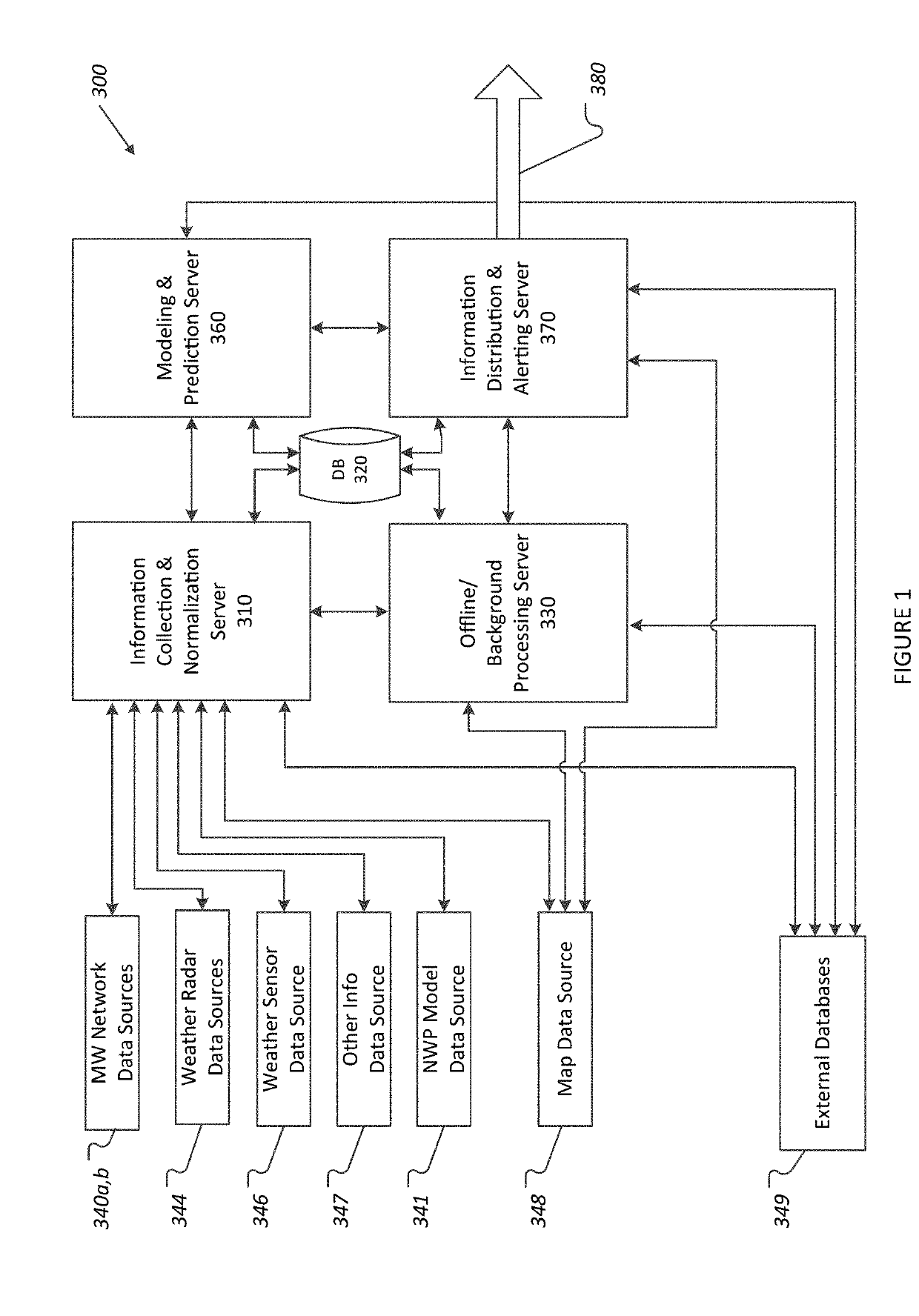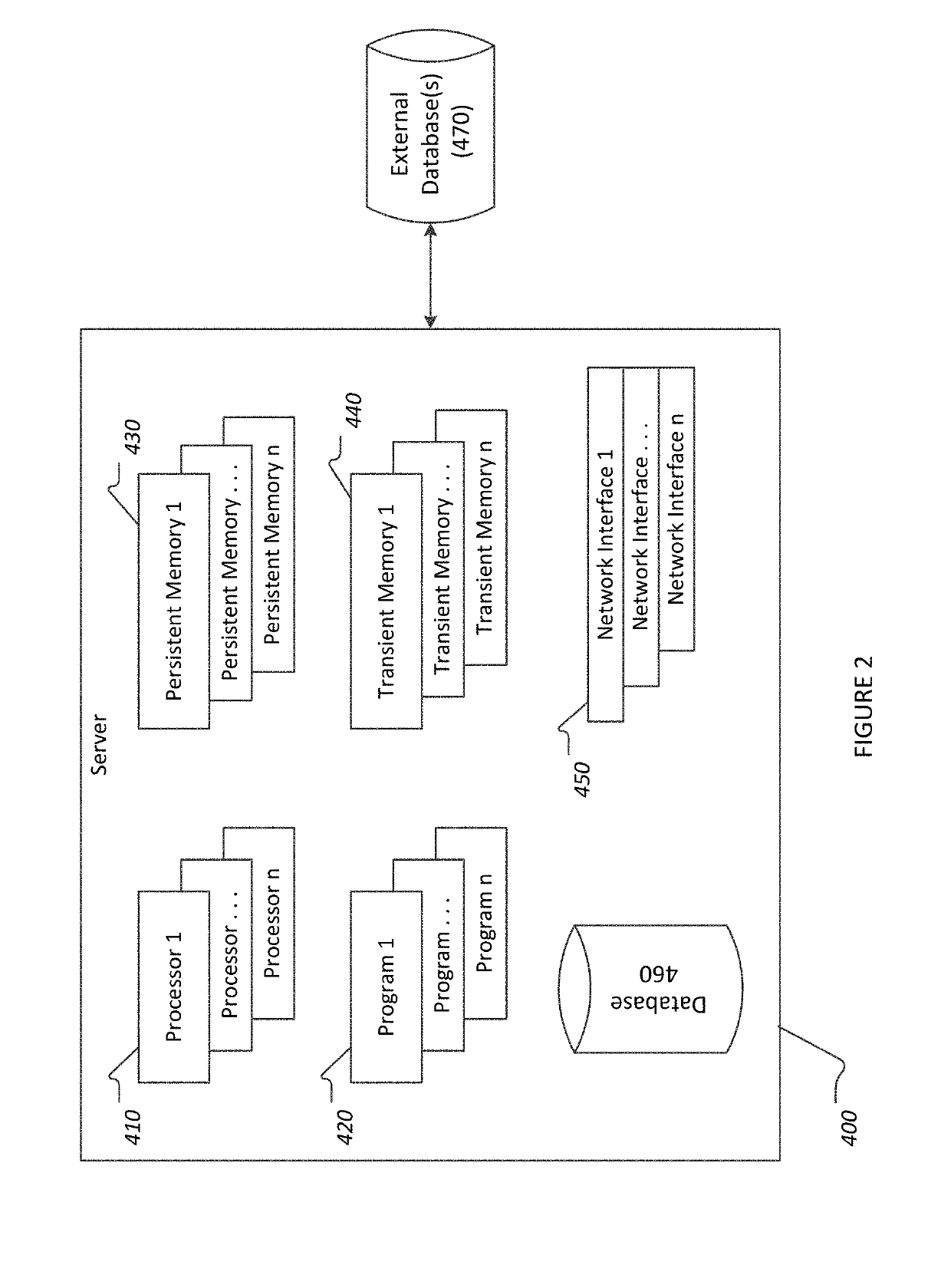Improved real-time weather forecasting for transportation systems
- Summary
- Abstract
- Description
- Claims
- Application Information
AI Technical Summary
Benefits of technology
Problems solved by technology
Method used
Image
Examples
Embodiment Construction
6.1 Overview
[0032]The systems and methods described herein provide an improved mechanism for collecting information from a diverse suite of sensors and systems, calculating the current precipitation, atmospheric water vapor, atmospheric liquid water content, or precipitable water and other rapidly changing atmospheric-based phenomena, for example presence and intensity of fog, based upon these sensor readings, predicting future precipitation and atmospheric-based phenomena, and estimating effects of the atmospheric-based phenomena on visibility, for example by calculating runway visible range (RVR) estimates and forecasts based on the atmospheric-based phenomena. The described system and methods provide for faster updates and use of rapidly updated collected data sets, significant accuracy improvements and improved forecasting accuracy, and real-time projections.
[0033]“Real time” meteorology equipment, such as weather radar, provides precipitation maps showing precipitation intensit...
PUM
 Login to View More
Login to View More Abstract
Description
Claims
Application Information
 Login to View More
Login to View More - R&D
- Intellectual Property
- Life Sciences
- Materials
- Tech Scout
- Unparalleled Data Quality
- Higher Quality Content
- 60% Fewer Hallucinations
Browse by: Latest US Patents, China's latest patents, Technical Efficacy Thesaurus, Application Domain, Technology Topic, Popular Technical Reports.
© 2025 PatSnap. All rights reserved.Legal|Privacy policy|Modern Slavery Act Transparency Statement|Sitemap|About US| Contact US: help@patsnap.com



